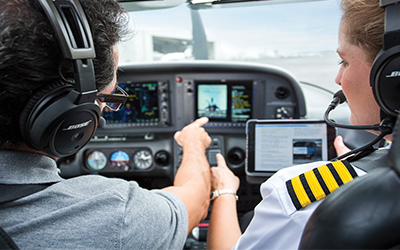Image Credit:
Cirrus Aircraft Royalty Free

In the flying world, people worry quite a bit about failures and mistakes. When things go wrong mid-air, the outcomes can be severe or even deadly. The system most likely to fail time and time again is human error. This doesn’t mean anything is wrong with the pilot, or that training wasn’t thorough enough, it just means that human beings are fallible. This is why all pilots should adopt the mantra of “trust but verify!”
You trust the process of your calculations, but the problem is that one single misalignment on the E6B or one missed key-punch can significantly throw off your numbers. Verifying your data is key. First, ask yourself if the data makes sense. After determining that it does, calculate a second time and make sure the numbers are the same.
Visual references are important in aviation, from being able to see the horizon all the way down to basic flight visibility. During instrument flying, we are told to trust the instruments, but don’t instruments sometimes fail, too? This is where “trust but verify” comes back into play. Learn to double-check instruments and how to spot the failure of an instrument.
Any time you have your aircraft fueled, make sure to stick the tanks to verify the amount of fuel. Distraction, carelessness, or miscommunication can result in the plane not being properly fueled. It is acceptable and expected to confirm that the aircraft is correctly fueled, even in the presence of the line guys.
Airplane technology continues to improve, creating better, more reliable equipment and systems. As a result, accident rates have dropped. Unfortunately, the human system will still always be the more dangerous one in an aircraft. The best thing you can do to ensure safety and avoid mistakes is to trust but very!
To learn more about pilot training or maintaining your aircraft, please contact Elevate Aviation in Salt Lake City, Utah.